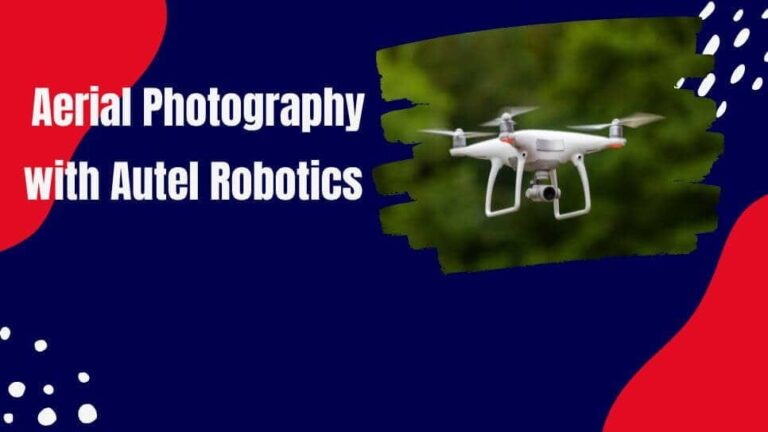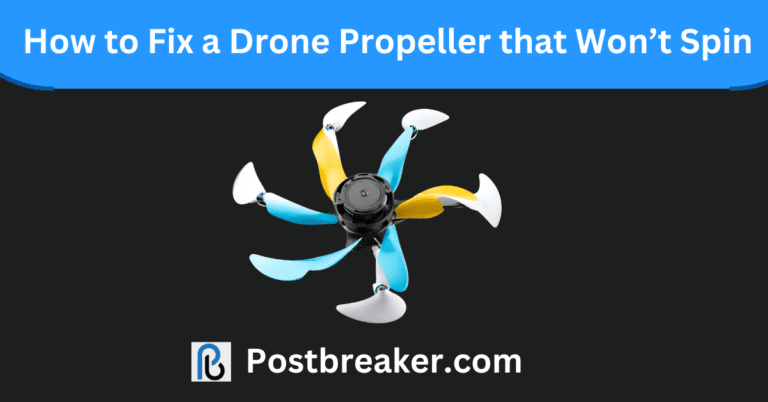Why My Drone is Not Stable: Troubleshooting Tips
If your drone is not stable, it could be due to environmental factors, such as wind or electromagnetic interference, or technical issues like motor or sensor failure. Regular calibration and cleaning can also help maintain stability and flight efficiency.
Additionally, an improperly balanced center of gravity may affect the drone’s stability and handling, leading to reduced flight time and increased power consumption. It’s important to consider these factors and troubleshoot accordingly to ensure a stable and smooth drone flight experience.
Electromagnetic interference, caused by nearby electronic devices or power lines, can disrupt the stability of a drone during flight, leading to erratic behavior and difficulty in hovering.
Understanding Drone Stability Issues
Factors Affecting Drone Stability:
1. Technical Issues and Instability:
Drones can experience technical issues, such as motor or sensor failure, which can cause instability in flight. As drones become more complex and incorporate more advanced technology, they may be more susceptible to technical issues that can affect their stability.
2. Importance of Balanced Center of Gravity:
If your drone’s center of gravity is not properly balanced, it can affect the drone’s stability and handling, which in turn can increase your power consumption and reduce your flight time. Regular calibration can help your drone fly more efficiently and extend your flight time.
3. Role of Gyroscopes in Drone Stability:
A gyroscope measures the rate of rotation and helps keep the drone balanced. Gyroscopes play a crucial role in maintaining the stability of the drone during flight.
4. Impact of Environmental Factors:
When considering the reasons why a drone may veer off course, it is important to take into account environmental factors such as wind, electromagnetic interference, and launching from uneven surfaces. These factors can significantly affect the flight stability and control of the drone.
To ensure stable flight, it is essential to address and understand these various factors that can affect drone stability. By doing so, you can optimize the performance and reliability of your drone during flight.
Common Troubleshooting Tips
When it comes to addressing stability issues with your drone, there are a few common troubleshooting tips that can help:
Calibrating Drone Controller: Ensure that your drone controller is calibrated correctly. This will help maintain stability during flight.
Addressing Gimbal/Camera Yaw Issue: If you are experiencing stability issues related to the gimbal or camera yaw, check for any misalignment or faults in these components.
Checking Motor Direction and Mapping: Verify that the motor directions and mapping are correct. Misconfigured motors can lead to instability.
Examining ESC, FC, and Motor for Faults: Inspect the electronic speed controllers (ESC), flight controller (FC), and motors for any faults or damage.
Inspecting Propellers for Damage or Misalignment: Check the propellers for any signs of damage or misalignment. Faulty propellers can affect the stability of the drone.
By following these troubleshooting tips, you can identify and address the potential reasons why your drone is not stable during flight.
Dealing With Specific Stability Problems
If you’re wondering why your drone is not stable, there could be several reasons. Environmental factors like wind and electromagnetic interference can affect its stability. Additionally, technical issues such as motor or sensor failure may also cause instability in flight.
| Dealing with Specific Stability Problems |
|
Drifting or Tilting to One Side If your drone is drifting or tilting to one side during flight, it could be due to a few factors. First, check if the propellers are properly tightened and not damaged. Loose or damaged propellers can affect the stability of the drone. Additionally, ensure that the motors are functioning correctly and spinning in the right direction. Incorrect motor direction can cause the drone to drift. Finally, check the balance and calibration of your drone’s flight controller and gyroscope. |
|
Uneven Hovering or Inability to Stay Straight If your drone is unable to hover evenly or stay straight during flight, it may be due to an issue with the drone’s center of gravity. Regular calibration and balancing of the drone can help improve stability. Check if the battery is properly attached and if any additional equipment, such as a camera or payload, is affecting the balance. Wind and other environmental factors can also affect the drone’s ability to stay straight, so consider flying in calm conditions. |
|
Erratic Flight Behaviour If your drone is exhibiting erratic flight behavior, it could be a sign of technical issues. Check for any motor or sensor failures that might be causing the instability. Additionally, ensure that your drone’s firmware is up to date and that all components are properly connected. In some cases, faulty ESCs or motors may need to be replaced to restore stability. Regular maintenance and troubleshooting can help identify and resolve any stability problems with your drone. |
Understanding Environmental Factors
Understanding Environmental Factors: Impact of Wind Conditions: Windy conditions can significantly affect the stability of a drone during flight. Strong gusts of wind can cause the drone to veer off course and struggle to maintain stability. Electromagnetic Interference: The presence of electromagnetic interference can disrupt the drone’s control systems, leading to instability in flight. Launching from Uneven Surfaces: Launching a drone from uneven surfaces can cause imbalance and instability, affecting its ability to maintain a stable flight path.
Preventive Measures For Maintaining Drone Stability
Regular Drone Calibration: Calibrate and clean your drone regularly. Regular calibration can help your drone fly more efficiently and extend your flight time. If your drone’s center of gravity is not properly balanced, it can affect the drone’s stability and handling, which in turn can increase your power consumption and reduce your flight time.
Cleaning and Maintenance: Environmental factors, such as wind, electromagnetic interference, and launching from uneven surfaces, can significantly affect the flight stability and control of the drone. Proper cleaning and maintenance can help mitigate these factors and ensure stable flight.
Proper Propeller Selection: The selection of the right propellers is crucial for maintaining drone stability. Damaged or incorrect propellers can lead to instability during flight and can adversely impact the drone’s performance.
Avoiding Excessive Power Consumption: Ensuring that the drone is not experiencing technical issues, such as motor or sensor failure, can minimize excessive power consumption, which can impact the stability and flight time of the drone.
Frequently Asked Questions On Why My Drone Is Not Stable
How Do I Keep My Drone Stable?
To keep your drone stable, regularly calibrate and clean it. Proper calibration ensures efficient flight and extends flight time. Balancing the center of gravity is crucial for stability and handling, reducing power consumption and increasing flight time. Environmental factors like wind and electromagnetic interference can also affect stability.
Technical issues such as motor or sensor failure can cause instability. A gyroscope helps maintain balance and stability during flight. Electromagnetic interference from electronic devices can disrupt drone stability.
Why Is My Drone Unstable?
The instability of your drone can be caused by environmental factors like wind and electromagnetic interference, as well as technical issues such as motor or sensor failure. Regular calibration and cleaning can help improve stability.
What Are Possible Reasons Of Instability In Drone?
Possible reasons for instability in a drone include environmental factors such as wind and launching from uneven surfaces, technical issues like motor or sensor failure, and electromagnetic interference from nearby electronic devices or power lines. Regular calibration and cleaning can help maintain stability.
What Makes A Drone More Stable?
To make a drone more stable, ensure regular calibration and proper balancing of the center of gravity. Environmental factors like wind and electromagnetic interference can also affect stability. Additionally, technical issues such as motor or sensor failure can lead to instability.
Gyroscopes play a crucial role in maintaining balance and stability during flight.
How Can I Keep My Drone Stable?
Calibrate and clean your drone regularly to ensure optimal stability. Proper center of gravity balance is crucial for efficient flight and extended flight time.
Conclusion
To keep your drone stable, it is important to calibrate and clean it regularly. Properly balancing the drone’s center of gravity can greatly improve its stability and handling, resulting in increased efficiency and longer flight time. Additionally, environmental factors like wind and electromagnetic interference, as well as technical issues such as motor or sensor failure, can affect the stability of your drone.
By understanding and addressing these factors, you can ensure a more stable and enjoyable flying experience.




